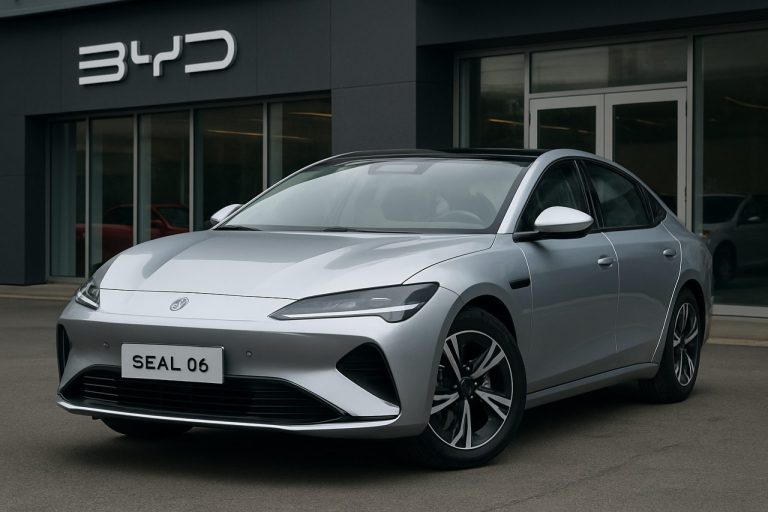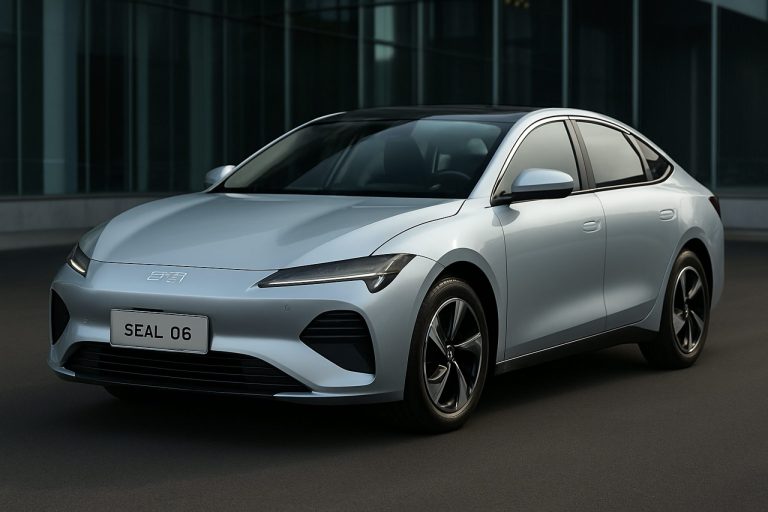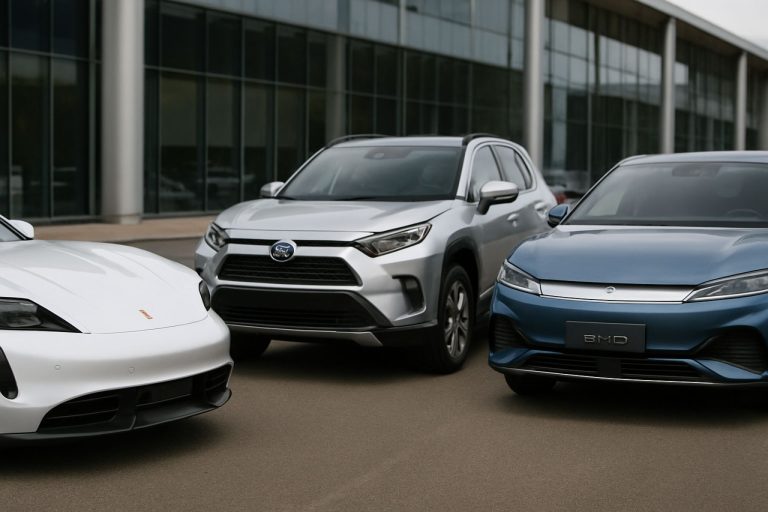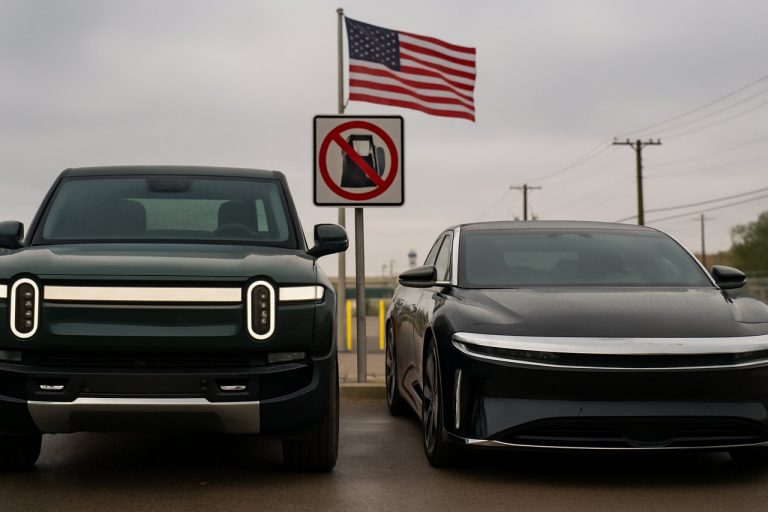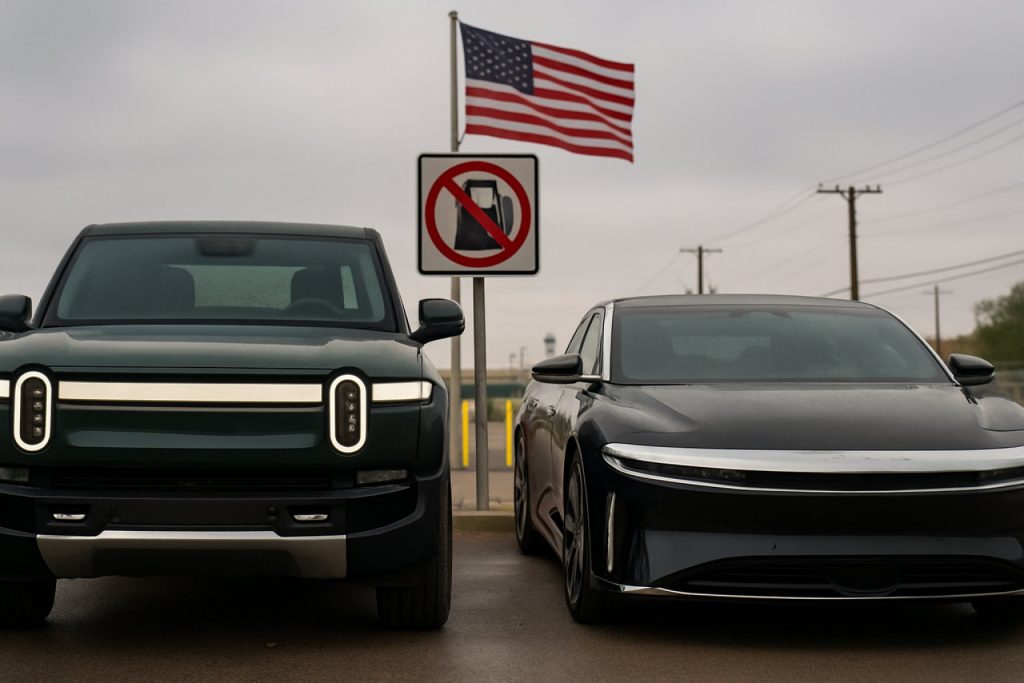
Shocking New Survey Reveals EV Fatigue: What That Means for Rivian, Lucid, and the Future of Electric Cars
Rivian and Lucid face a tough road ahead in 2025 as U.S. EV interest plunges, while government support and consumer sentiment cool off.
- Only 16% of U.S. consumers are “likely” to buy an EV next.
- EV market share grew to 7.7% in Q1 2025.
- Average new EV price: $59,205 vs. $47,462 for all new cars.
- 62% of buyers cite battery repair cost as a dealbreaker.
Rivian entered 2025 with stalled delivery numbers and no major new model launches, while Lucid Motors hit stride after six quarters of record-breaking deliveries. But as both automakers gear up for a pivotal year, the electric vehicle (EV) industry is driving into a storm of waning U.S. enthusiasm and policy uncertainty.
A recent AAA survey paints a sobering picture: American interest in EVs has dropped to its lowest point since 2019. Only 16% of respondents said they’re likely to buy an EV—a steep fall that could spell big trouble for automakers betting on electric’s unstoppable ascent.
Why Are Americans Cooling on EVs?
After a decade of buzz, the gloss may be fading from the electric revolution. Survey data shows that more U.S. car buyers are thinking twice about plugging in. Their reasons? Common worries include sticker shock—the average new EV costs over $59,000 versus less than $48,000 for the typical car—alongside anxieties about battery repair bills, range, and scarce charging stations.
A striking 62% are wary of battery maintenance costs, and 55% cite a lack of convenient public chargers. For many, a car that runs out of power on the highway is a dealbreaker.
How Is Government Policy Fueling Uncertainty?
As Tesla and others have made EVs cool, the industry has counted on strong policy support. That may be shifting. House Republicans recently passed a bill that could gut popular incentives, including the federal $7,500 tax credit for new EV buyers. The bill would also slap on new annual taxes: $250 for EVs and $100 for hybrids.
These moves come as automakers like Rivian and Lucid are banking on government support to offset costs and spark demand, especially while charging networks—and consumer confidence—lag behind.
Is the EV Slowdown Real—or Just a Blip?
Despite the gloomy headlines, there are a few glimmers of hope. S&P Global Mobility reports that total EV registrations in the first quarter of 2025 were up 16% year-over-year. Market share also inched up to 7.7%. Some of this growth may be a ‘pull-ahead’ effect, spurred by rumors of tax credit cuts.
Still, experts caution investors: don’t expect the breakneck expansion of years past. For brands like Rivian, without a hot new model in 2025, the pressure is on to find new ways to excite buyers—or risk stalling out.
What’s Next for Investors in Rivian and Lucid?
Rivian fans, take note: With little momentum until the anticipated R2 arrives, this year could offer rare buying windows for long-game believers. Lucid, meanwhile, pushes ahead with the new Gravity SUV—even as sentiment sours, their production ramp signals resilience.
Ultimately, both companies need a broader EV market comeback. U.S. consumers are proving harder to convince than automakers and Wall Street hoped.
Want to stay ahead? Keep tabs on industry updates via Bloomberg and CNBC.
How Can Buyers and Investors Navigate the EV Market in 2025?
For shoppers, research charging options and true ownership costs before you buy. For investors, watch for policy swings, quarterly delivery numbers, and EV tax credit news. The next few months could set the tone for the industry’s new era.
The electric car revolution is flirting with a flat tire—don’t get caught on the roadside.
- Monitor EV policy shifts and proposed taxes
- Compare total cost of ownership, not just sticker price
- Follow Q2 and Q3 delivery numbers from key automakers
- Track infrastructure investments in charging networks
- Revisit EV investment positions as the landscape evolves
